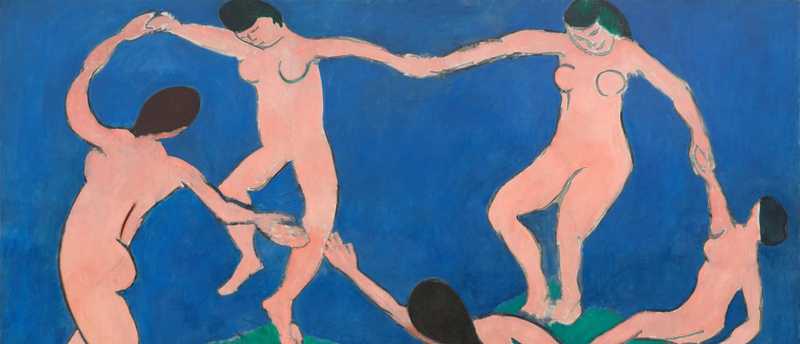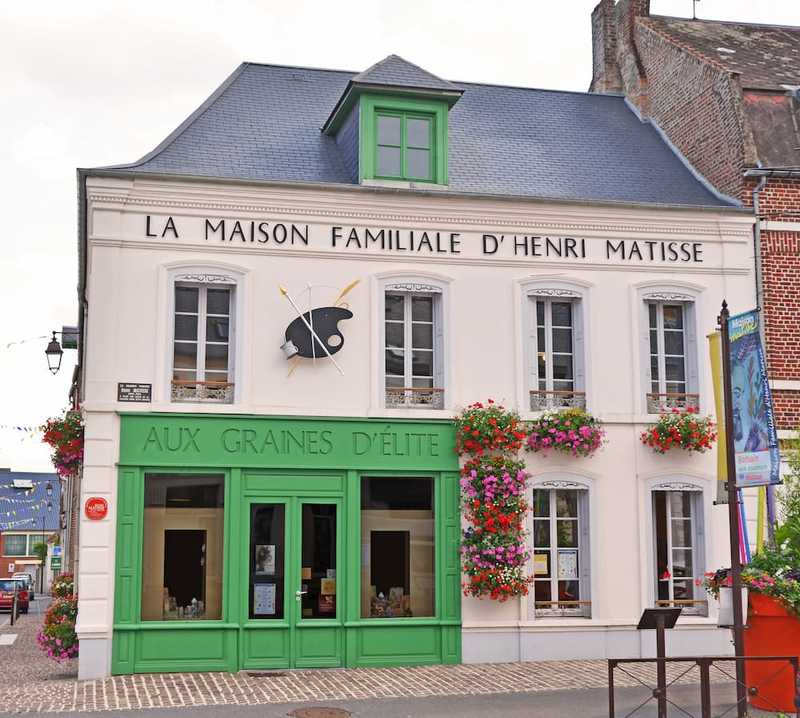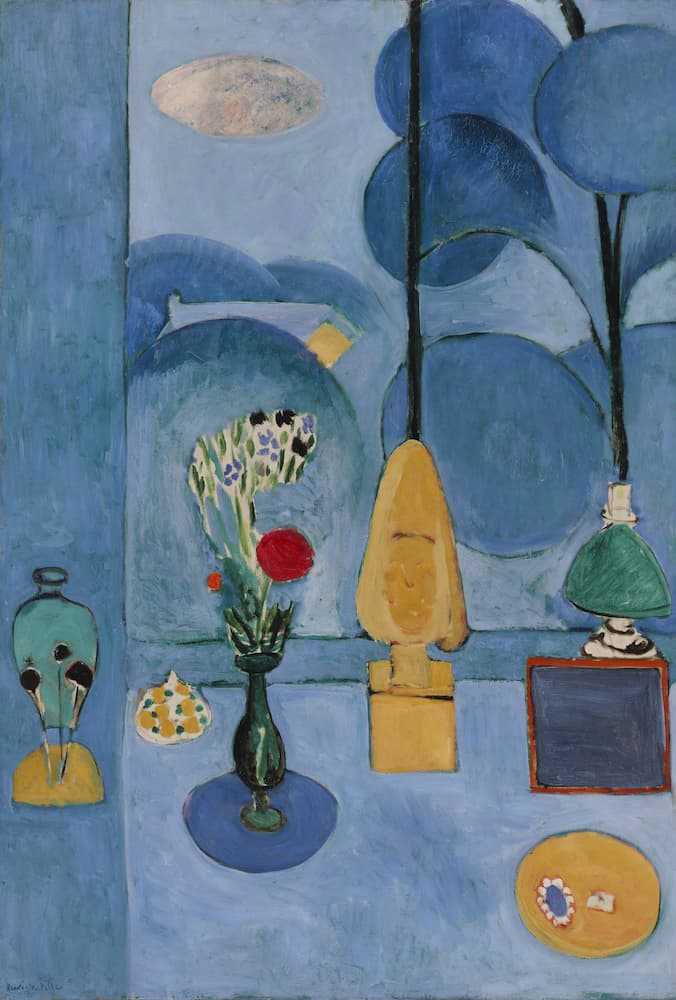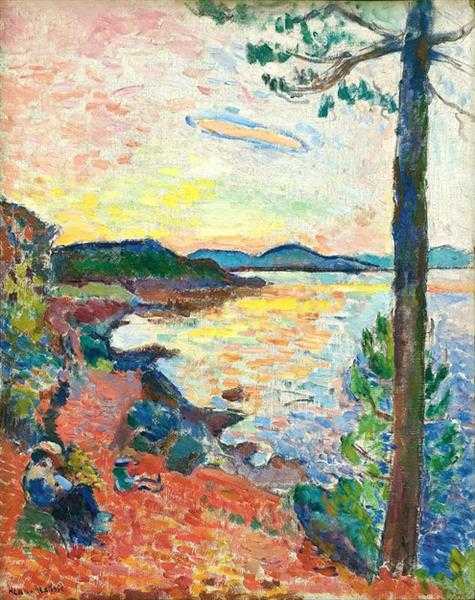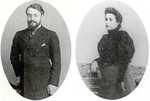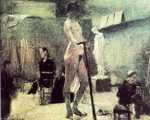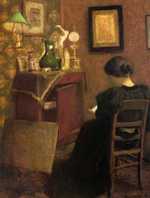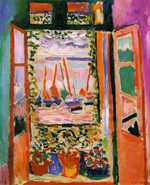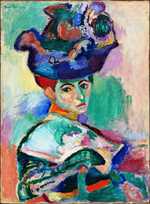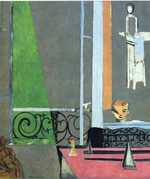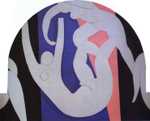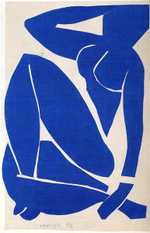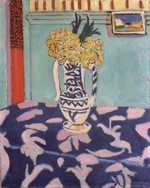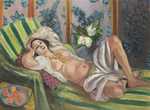1. Early Life
1869: Matisse is born to a wealthy family in Le Cateau-Cambrésis, in Northern France on New Year's Eve. His father Emile-Hippolyte-Henri Matisse is a wealthy grain and hardware merchant. Matisse spends his childhood years in Bohain-en-Vermandois in Picardie, France.
1889: Matisse studies at College de Saint Quentin and later moves to Paris to study law. In 1889 he returns to Saint-Quentin as a law clerk. That job doesn’t last long since he contracts appendicitis and needs to rest at home for several months, during which he discovers a love for painting when his mother brings him art supplies.
2. Early Training
1891: Matisse goes to Paris again, this time to become a professional artist. To join the prestigious École des Beaux Arts, he needed to prepare for the entrance exam and for that he joins the Académie Julian which has a formal and academic style of instruction under the tutelage of the highly conservative William-Adolphe Bouguereau. He becomes familiar with impressionist and post-impressionist works while living in Paris.
1892: Matisse leaves the Académie Julian for classes at the École des Arts Décoratifs and informally joins the studio of Gustave Moreau. Moreau is a symbolist who focuses on colors and famously said, "Colors must be thought, dreamed, imagined.'' Working with him has a lasting impact on Matisse's evolving artistic style. Gustave Moreau is a tolerant teacher who encourages Matisse to explore his artistic style and imagination.
1894: Matisse and his lover Caroline Joblaud have their first child, a girl named Marguerite.
1895: While still studying with Moreau, Matisse finally gets accepted to the École des Beaux Arts. His artistic horizons widen and he gains exposure to a number of styles, from academic still lifes to the relaxed brushwork of the Impressionists.
1896: Matisse has success at the traditional Salon (Salon de la Société Nationale des Beaux-Arts) when he presents his work. His painting Woman Reading (1894) is bought by the government. He becomes an associate member of the Salon society.
1897: Matisse takes liberties with his artistic expression and his painting The Dinner Table, in which he fuses together elements from impressionism with a strong classical style, creates outrage at the salon.
1898: Matisse marries Amelie Parayre from Toulouse after ending his relationship with Caroline. They leave Paris for a year and visit London and Corsica where he studies the work of J.M.W. Turner.
1899: Mattise’s son Jean is born. Matisse faces financial constraint but that does not deter him from collecting revolutionary art pieces by the impressionists such as Cézanne’s Three Bathers, housed in the gallery of Ambroise Vollard. His interest in impressionism lessens after reading Paul Signac’s paper on the topic and after being inspired by the vibrant colors employed by post impressionists in their works.
Matisse stops exhibiting at the Salon and becomes more involved amongst the avant garde art circles of Paris where modern art is a hot topic of discussion.
1899: Matisse stayed at the atelier until the death of Moreau. Moreau is replaced by Fernand Cormorand, who proves to be a rigid professor. Matisse struggles to find another instructor.
3. The 1900s:
Matisse had been inspired by the technique of pointillism as practiced by Georges Seurat and Paul Signac at the turn of the century.
However, in 1905, he spent the summer months at a small fishing village on the Mediterranean in France called Collioure, with André Derain. Here, under bright sunlight and vibrant landscape, he begins experimenting with simplifying forms, applying spontaneous brushstrokes in an array of intense complementary colors. His work in the early 1900s is all about bold expressive colors with a particular focus on line and perspective.
1900: Matisse’s second son, Pierre, is born. Despite his fame, his financial situation is dire. He accepts work on the decoration of the Grand Palais, which is built to extend part of the new Exposition Universelle situated in the Champs-Élysées quarter. Matisse’s wife Amelie opens up a boutique to support the household financially.
1901: Matisse presents his work for the first time in the Salon des Indépendants, a juryless platform founded in 1884 for artists who did not get the recognition they deserve from the traditional Salon. The same year, he comes down with bronchitis and needs a long rest.
1902: At the gallery of Berthe Weill, he presents his work in a group show. He returns to Bohain, his childhood home, with his wife and three children for a short while.
1903: Matisse and a number of his peers from Moreau’s studio and the Académie Carrière are instrumental in the formation of the Salon d’Automne.
1904: Matisse organizes a solo exhibition at Ambroise Vollard’s gallery when he’s almost 34 years old. The show is a failure. In July Matisse takes his family to Saint-Tropez, following the advice of Paul Signac. He paints The Gulf of Saint-Tropez which shows his wife and son gazing at a beautiful sunset.
1905: Matisse spends summer in Collioure where his ideas give birth to fauvism. Open Window Collioure and Woman with Hat are two paintings that are illustrative of this period. These paintings are presented in Salon d’Automne in the fall. This new style captivates the attention of critic Louis Vauxcelles, who describes the movement as les fauves (wild beasts), from which the term fauvism emerges and Matisse becomes its de facto leader.
Matisse meets Picasso at their mutual friend Gerturde Stein’s home and they become both friends and rivals. Matisse is enraged when Picasso paints Les Demoiselles d'Avignon in 1909 which Matisse considers a direct affront to his painting, Le Bonheur de Vivre.
1906: Matisse’s financial situation improves when he gains the patronage of the Stein family, including Gertrude Stein, her brothers Leo and Michael, and Michael’s wife, Sarah. Matisse presents his work in Salon des Indépendants and Salon d’Automne and holds an exhibition in the Galerie Druet in Paris.
1907: A group of his admirers including Hans Purrmann and Sarah Stein, gather funds to organize a private, non commercial art academy called the Académie Matisse in Paris where Matisse tutors periodically until 1911.
Around this time fauvism is in decline. Matisse’s style evolves into creating images consisting of simplified objects against a planar background of flat colors. Meanwhile, his interest in sculpture grows, particularly after a trip to Algeria, Morocco and Spain in 1906 where he is impressed by North African artwork and primitivism.
1908: As his fame grows, Matisse gains the support and patronage of more people including the Russian art collector Sergei Ivanovich Shchukin, who collects a number of his paintings.
4. Nice Period
The Great War affected Matisse badly and his emotions translated into his creative process, leading to a duller palette.
However he returned to his vibrant colors around the time war ended, marking the start of his Nice period, which lasted from about 1917 to 1930.
Matisse’s paintings from this period are focused on more intimate subjects such as female nudes and still lifes, and employ a bright color palette, with many of the paintings using the white of the canvas to give the impression of bright natural light, representative of his stay in the sunny Southern France.
1912: Matisse’s sculpture is on public display in New York City, while his paintings are displayed in London and Cologne.
1913: His collection of 13 paintings is on display at the New York Armory Show, and when his collection is taken to Chicago, his painting The Blue Nude is burned by students in a protest against its subject matter.
1916:Matisse explores and experiments with geometrical structures and planes, intrigued by the elements of cubism that Picasso was adopting. This influence is seen in his paintings like the Piano Lesson (1916).
1917: This month marks the beginning of Matisse’s Nice period, as he begins spending the cold winter months in Nice close to the Mediterranean.
1921: Matisse moves to Nice permanently. During this period of his life his style changes to adopting lighter and brighter colors as opposed to the saturated acidic colors of earlier years. His subjects are mainly nude figures against a background of natural lighting and patterns. He also experiments widely with printmaking.
1920: The first book to be written about Matisse is published. It is an important artistic milestone since it is an acknowledgement of his contributions to modern art during his lifetime.
Matisse is hired by Sergei Diaghilev’s production to design the ballet sets for a play titled Le Chant du Rossignol.
1930: Matisse faces a creativity crisis, and feels unfulfilled with the work he produces. In search of fresh inspiration he travels, first to Tahiti and then thrice to the United States. During this period he spends more time exploring other creative avenues such as glass engraving, tapestry designing and illustrating books.
1931: Matisse is commissioned by an art gallery collector, Dr. Albert Barnes of the Barnes Foundation in Pennsylvania to create a mural titled Dance II. He also designs illustrations for a series of poetry collections.
1932: Matisse hires Lydia Delectorskaya to work as his studio assistant. She later takes on the role of domestic help, and three years later, models for Matisse. While their relationship is platonic, Matisse’s wife is not happy with their working relationship, and viewing it as a betrayal, separates from Matisse. Lydia ends up remaining by Matisse’s side till his death.
5. Later Years
In his later years Matisse turned to paper collage after undergoing abdominal surgery. This medium allowed him the physical ease of creation. He would use a long pole with a pencil attached to it to reach his canvas from his bed.
However, his art remained as vibrant as ever. To Matisse, paper cut outs presented the perfect union of sketching and painting and led him to simplify his forms further. Soon he created large sized works that were based entirely on paper collage such as the Blue Nude series (1952 onwards).
1939: Matisse separates from his wife. The beginning of World War 2 and his declining health combined with the separation contributes to his anxiety about his art which echoes in his work.
1941: Matisse undergoes a surgery for his intestinal problems which leaves him bedridden. While confined to his bed he experiments with paper cut outs due to the ease of the medium, and designs several paper murals.
1947: Matisse publishes his limited edition art book titled Jazz in September. It is a collection of his thoughts about life and his creative pursuits, coupled along with his paper cut out images.
1951: One of his final large scale projects is the decoration of the Chapel of the Rosary in Vence (1948-51), a town near Nice. Matisse designs murals, furnishings, and the priest’s vestments and uses the paper cut-out technique to design the stained-glass windows.
1952: Matisse designs a large-scale mural entirely out of paper cut outs called the Swimming Pool. It depicts swimmers in loose, expressive poses, cut out of bright blue paper and pasted on large sized papers. It is currently housed in the Museum of Modern Art in New York.
1954: Matisse dies of a heart attack on 3rd November, at the age of 84, with his daughter Marguerite and his assistant Lydia Delectorskaya by his side. He is buried in a cemetery in Cimiez.
6. Legacy
2009: Matisse’s painting "Les coucous, tapis bleu et rose," (The Cowslips, Blue and Rose Fabric) painted in 1911, sells for $45.95 million at the Yves Saint Laurent estate art auction.
2010: A new Matisse record is created when a 1978 cast of his sculpture of a woman’s back from 1930 sells for $49 million at auction in Christie’s New York.
2018: Henri Matisse’s Odalisque “couchée aux magnolias” (1923) fetches $80.8 million, a further Matisse record.

